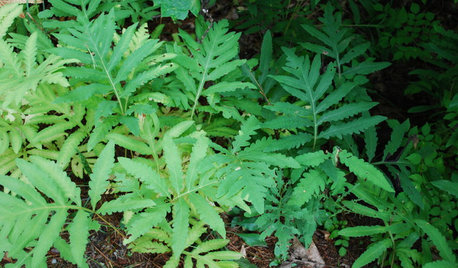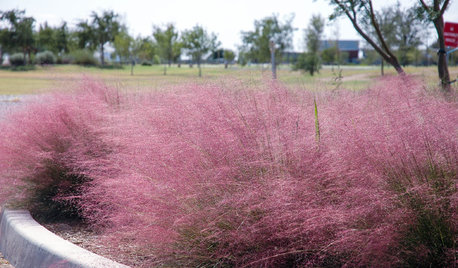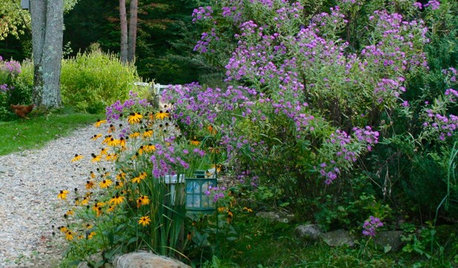To dig or not to dig - native plant rescue
LantanaTX
18 years ago
Related Stories

GARDENING GUIDESGarden Myths to Debunk as You Dig This Fall and Rest Over Winter
Termites hate wood mulch, don’t amend soil for trees, avoid gravel in planters — and more nuggets of garden wisdom
Full Story
GARDENING FOR BUTTERFLIES3 Ways Native Plants Make Gardening So Much Better
You probably know about the lower maintenance. But native plants' other benefits go far beyond a little less watering and weeding
Full Story
GARDENING GUIDESGreat Design Plant: Sensitive Fern Shows Its Strengths
Wondering what will thrive in your wet, shady garden? It’s Onoclea sensibilis to the rescue
Full Story
NATIVE PLANTSPlant These Fall-Flowering Natives in Early Summer for Pollinator Love
These 3 groups of plants will support masses of beneficial insects come autumn
Full Story
GARDENING GUIDESGarden-Friendly Native Alternatives to Overplanted Exotics
There are lots of gorgeous, wildlife-friendly native plants ready to make an appearance in your garden
Full Story
GARDENING GUIDES15 Native Flowers That Feed Native Bees
These perennials offer superfood to hundreds of bees and are gorgeous in their own right
Full Story
NATIVE PLANTS10 Top Plants Native to the Desert Southwest
Get a thriving garden despite unforgiving conditions with these tough, unthirsty, sun-loving beauties
Full Story
GARDENING GUIDESHow to Find the Right Native Plants for Your Yard
Find plant maps, sale sites and guides that make going native in the garden easier than ever
Full Story
GARDENING GUIDESTop 10 Native Plants for the Northeast
For a low-maintenance, wildlife-friendly landscape, use native plants adapted to the climate and range of soils in the Northeast
Full Story
GARDENING GUIDESLet's Weed Out 4 Native Plant Myths
Plant wisely for a garden that supports pollinators and requires less work
Full StorySponsored






ahughes798
veronicastrum
Related Professionals
Beachwood Landscape Contractors · Bloomington Landscape Contractors · Bowie Landscape Contractors · Clayton Landscape Contractors · Lakewood Landscape Contractors · Middletown Landscape Contractors · Petaluma Landscape Contractors · Wells Landscape Contractors · Alvin Decks, Patios & Outdoor Enclosures · Athens Decks, Patios & Outdoor Enclosures · Dayton Decks, Patios & Outdoor Enclosures · Fort Collins Decks, Patios & Outdoor Enclosures · Pecan Grove Decks, Patios & Outdoor Enclosures · Racine Decks, Patios & Outdoor Enclosures · South Houston Decks, Patios & Outdoor Enclosureslauramich
katob Z6ish, NE Pa
ladyslppr
ahughes798
linda_tx8
Lynda Waldrep
katob Z6ish, NE Pa
Lynda Waldrep
ladyslppr